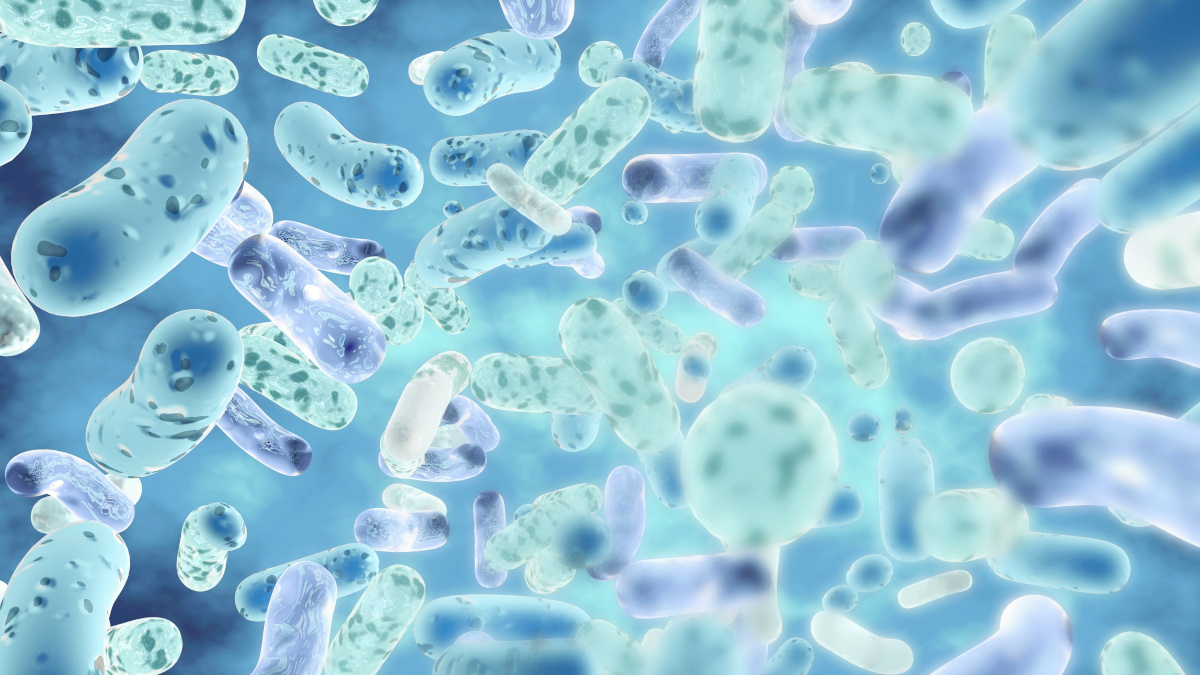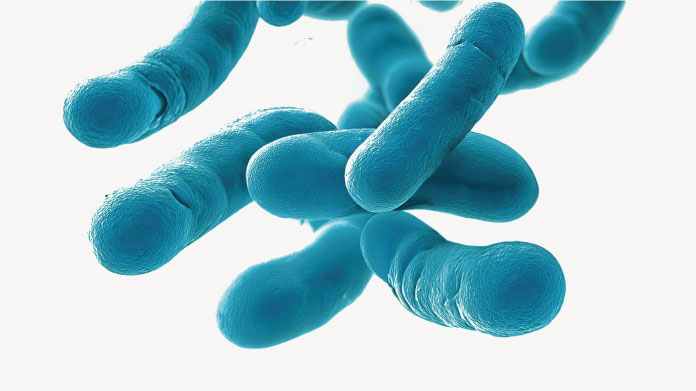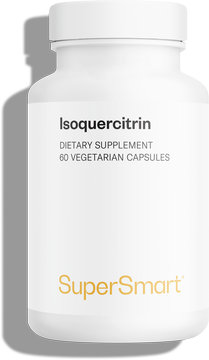Probiotics: Can You Take Them All The Time?
Can you take probiotics continuously, or is it better to have regular breaks? Read on for the answers.

Quick Recap on the Gut Microbiota
It has been attracting huge interest in recent years as scientific understanding of how it works and what role it plays in the body has improved: the gut microbiota is a colony of microorganisms which have a symbiotic relationship with the body (1).
Consisting of an average 1,013 micro-organisms, our gut microbiota, also known as gut flora, has as many organisms as the body has cells! There are up to a thousand species, predominantly bacteria, with the highest concentrations found in the colon (2).
Like fingerprints, each of us has our own unique gut microbiota, though research suggests there is a base of bacterial strains common to everyone.
And the most remarkable thing is that this microbiota starts to form at birth. Initially, it is aerobic bacteria (enterococci, staphylococci, etc.) that colonize the gut and consume the oxygen there, enabling subsequent colonization by anaerobic bacteria (Bacteroides, Clostridum, Bifidobacterium, etc.).
The qualitative and quantitative development of the gut flora will then be determined by a range of factors including dietary diversity, genetics, level of hygiene, type of health care received, fluctuations in sex hormones, etc. (3).
These microorganisms play a crucial role in our health. They enable fermentation of non-digestible food residues, facilitate nutrient uptake, are responsible for breaking down a number of carbohydrates (starch, cellulose, polysaccharides, etc), help synthesize certain vitamins, regulate metabolic pathways, ensure good intestinal immune system function, etc. (4).
So as you can see, our gut flora constitutes a veritable powerhouse, without which our bodies would not function properly!
Probiotics: Health-Friendly Bacteria and Yeasts
As knowledge of the gut microbiota improved, researchers and manufacturers set about culturing these same bacteria and yeasts that populate the gut in order to develop what are now termed probiotics (or microbiotic supplements) (5).
Probiotics are actually cultures of microorganisms (Bifidobacterium, Lactobacillus, Lactococcus, saccharomycetes, etc.) which, to varying degrees, are naturally present in fermented foods (such as kefir, yogurt, lactofermented vegetables , etc.), and which are also available in the form of dietary supplements.
There are two types of these supplements:
- Mono-strain microbiotic supplements which contain a single strain of a specific microorganism;
- Multi-strain formulations in which several different strains are combined.
Once ingested, these microorganisms travel to the gut flora to join the existing microorganism population.
But the question is ... should you take probiotics continuously or leave a break between one course and the next?
Taking a a few weeks’ break (1 month, for example) between courses of probiotics is generally recommended in order to allow the gut to regulate itself and perform its functions unaided (6) — especially if you are taking two consecutive courses of the same strain.
At the same time, there is nothing to prevent you from taking probiotic supplements throughout your life. In this case, however, we would recommend extending the breaks between one course and the next to prevent your gut from getting too ‘lazy’.
How Long Should a Course of Probiotics Last?
2 weeks, 3 weeks, 3 months, even 6 months: the length of a course of probiotics depends on the objective, the season, the health condition of the individual and the recommendations of the laboratory which cultured the microorganism strains.
If you suffer from recurrent gut challenges, you should perhaps make an appointment with your doctor for further investigations. You can also try to modify your diet to make it as healthy and balanced as possible.
Which Probiotic Supplements Should You Take?
Bacillus subtilis
Naturally present in the gut flora, the Bacillus subtilis bacteria is remarkable in being able to formspores resistant to extreme conditions of heat, dryness, and radiation (7).
SuperSmart's Bacillus Subtilis supplement contains an active strain, with 3 billion bacteria per capsule, encapsulated in such a way as to guarantee the microorganisms’ survival as far as the gut.
Lactobacillus gasseri
A type of lactic bacteria from the Lactobacillaceae family, Lactobacillus gasseri is naturally present in oral, vaginal, and gut microbiota, where it plays a protective role (8).
The supplement Lactobacillus Gasseri from SuperSmart is designed to reach the gut flora intact thanks to its gastro-resistant capsules (which do not dissolve in the stomach), and contains 6 billion microorganisms per capsules.
Lactoxira
Meanwhile the synergistic supplement Lactoxira combines 8 different strains of bacteria from three families: Bifidobacterium (longum, bifidum, lactis), Lactobacillus (plantarum, casei, brevi, salivarius), and Lactococcus (lactis) (11).
These 8 bacterial strains are found naturally in human gut flora and have been extensively studied in order to better understand their role in a number of the body’s processes.
Full Spectrum Probiotic Formula
By taking a comprehensive microbiotic formulation such as Full Spectrum Probiotic Formula, you can obtain the benefits of 20 selected strains of Lactobacillus, Bifidobacterium, Lactococcus, etc. combined in a single, powerfully-dosed capsule which provides 36 billion CFU a day.
It is one of the broadest spectrum microbiotic formulations available.
References
- https://www.inserm.fr/dossier/microbiote-intestinal-flore-intestinale
- THURSBY, Elizabeth et JUGE, Nathalie. Introduction to the human gut microbiota. Biochemical Journal, 2017, vol. 474, no 11, p. 1823-1836.
- ISOLAURI, Erika. Development of healthy gut microbiota early in life. Journal of paediatrics and child health, 2012, vol. 48, p. 1-6.
- GÉRARD, Philippe et BERNALIER-DONADILLE, Annick. Les fonctions majeures du microbiote intestinal. Cahiers de Nutrition et de Diététique, 2007, vol. 42, p. 28-36.
- WILLIAMS, Nancy Toedter. Probiotics. American Journal of Health-System Pharmacy, 2010, vol. 67, no 6, p. 449-458.
- VITTON, Véronique et DAMON, Henri. Probiotiques en pratique dans le syndrome de l’intestin irritable: des réponses scientifiques à des questions pratiques. Hépato-Gastro & Oncologie Digestive, 2020, vol. 27, no 6, p. 605-612.
- KOVÁCS, Ákos T. Bacillus subtilis. Trends in microbiology, 2019, vol. 27, no 8, p. 724-725.
- SELLE, Kurt et KLAENHAMMER, Todd R. Genomic and phenotypic evidence for probiotic influences of Lactobacillus gasseri on human health. FEMS microbiology reviews, 2013, vol. 37, no 6, p. 915-935.
- NOUROUZI, JAMILEH, MIRZAII, M., et NOROUZI, M. Study of Lactobacillus as probiotic bacteria. 2004.
- LIN, Meei-Yn et CHANG, Fen-Juan. Antioxidative effect of intestinal bacteria Bifidobacterium longum ATCC 15708 and Lactobacillus acidophilus ATCC 4356., 2000, vol. 45, no 8, p. 1617-1622.
- KIMOTO-NIRA, Hiromi, MIZUMACHI, Koko, NOMURA, Masaru, et al.Lactococcus sp. as potential probiotic lactic acid bacteria. Japan Agricultural Research Quarterly: JARQ, 2007, vol. 41, no 3, p. 181-189.
1 Days
A Product worth waiting for when not…
A Product worth waiting for when not available and then arriving as a surprise!
DOMINIC
2 Days
On time shipping
On time shipping
GEORGE Verne
4 Days
Ordering was easy and the product was…
Ordering was easy and the product was delivered with no problems. Appreciated that I was notified when it would arrive. Thanks!
MascarC
9 Days
Great customer service - responsive …
I ordered from them and my item was unavailable for sometime. I was super happy when they reactivated my order and shipped my item which arrived very quickly. Great customer service.
Ruth Rueter
10 Days
Super fast shipping
Super fast shipping
Donald Borling
14 Days
Reputable companysearch and the number of…
The research and the number of selection of products.
NAKHJAVAN Shervin
27 Days
The Anti Aromatase is a great product
The Anti Aromatase is a great product. You just need to have constant inventory. Recently this product has been out of stock.
GEORGE Verne
28 Days
Great help on chat
Great help on chat. Knowledgeable and friendly.
Jason Argos
32 Days
Customer service was fast and friendly.
Customer service helped to stop the transaction process of the subscription. I appreciated that.
Greenie
32 Days
I order here due to the high quality of…
I order here due to the high quality of the products and the quick delivery of items - thank you
Barbara J
33 Days
SuperSmart's Eye Pressure supplements: highly recommended!
I purchase SuperSmart's Eye Pressure supplements regularly for over 5 years, and gotta say they are truly a wonderful product for my Glaucoma. Highly recommended if you have eye pain from your Glaucoma.
D. Martinez
38 Days
Quick service
Quick service
MONELL
39 Days
Speedy service.
Speedy service.
ROSENTHAL Marvin
42 Days
Clear website- Efficient
Clear website. Excellent search engine and fast delivery!
Mohamad Hussein
45 Days
They have great products.
They have great products.
Vickie





